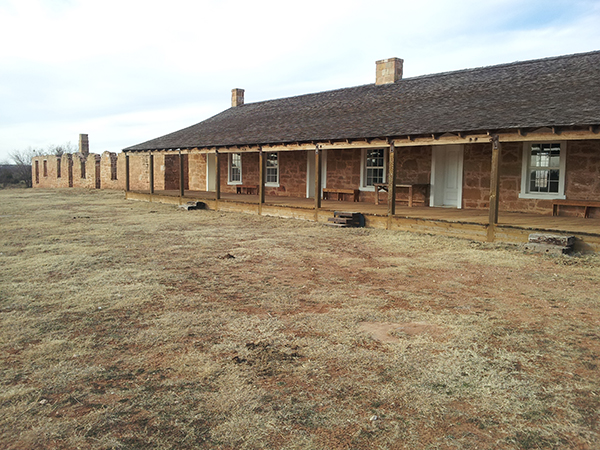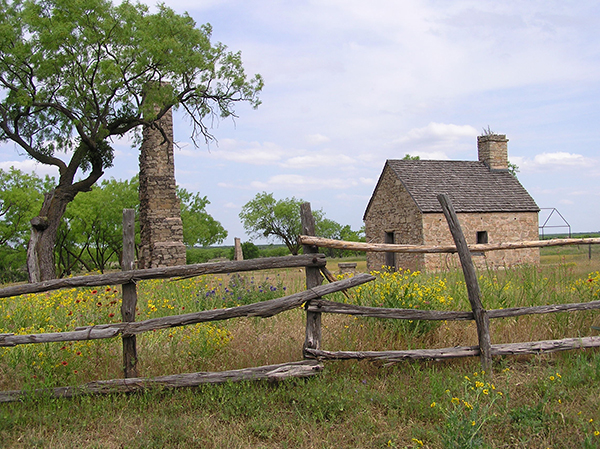The Desolate Line: Abilene Area Forts
By Misha Price, OLLI at Abilene, Coordinator

Fort Chadbourne Barracks

Fort Chadbourne Barracks
Local history surrounds us wherever we live, and Abilene, Texas is no exception. Through three amazing days in September, the Osher Lifelong Learning Institute (OLLI) members listened to John Caraway, director of History and Political Science at Cisco College, discuss three forts around the Abilene area.
OLLI members were in awe of the history that the Abilene area holds. Professor Caraway took members through the ins and outs of Fort Chadbourne, Fort Phantom Hill and Fort Concho. OLLI members learned some of the more notable people who passed through the forts, such as James Longstreet and George Pickett, as well as some interesting events that occurred. One such incident had members gasping as they listened to Caraway recount the Comanche attack on Private Mattlock. Mattlock was bathing at Oak Creek when the Comanche attacked, putting 13 arrows into the private. Miraculously the private made it back to Fort Chadbourne, where the surgeon removed the arrows. Mattlock survived that attack.

Fort Phantom Hill

Fort Phantom Hill
The second session revolved around Fort Phantom, which is most known around Abilene because of Lake Fort Phantom. The name of the fort could have come about a couple of ways. First, it could have been because of the way the landscape had a disappearing illusion about it. The other way is that it is thought to be haunted. Either way, the fort was only active between 1851 and 1854. Professor Caraway shared how the builder of Fort Phantom, Major J. J. Abercrombie, tried to send a letter to General Smith, trying to get the location of the fort moved because the weather conditions and lack of materials were rough. The general was on another expedition; therefore, he did not receive the letter, so the fort stayed.

The headquarters building of Fort Concho in San Angelo

The headquarters building of Fort Concho in San Angelo
Last, but certainly not least, Caraway introduced Fort Concho, located in the middle of San Angelo. This fort was built to replace Fort Chadbourne because it had a better, more stable water source. The fort went through two other names, Camp Hatch and Camp Kelly, before it was finally named Fort Concho in 1868. After the Salt Creek massacre, President Grant sent Colonel Ranald Mackenzie to command Fort Concho, where he was instrumental in bringing justice to the Kiowa and Comanche Indians for the attacks on wagon trains and settlements.
Many OLLI members enjoyed the question and answer portion of the class where some members were able to add a little more to Professor Caraway's lecture. One member, Herb Hurn, recalled when his mother lived in the apartments made from the barracks at Fort Concho, while attending college in San Angelo. It was fantastic listening to his memories and description of such a historic place. It is one more reason to enjoy our OLLI classes and members. Sometimes our memories become part of history, and it is wonderful to share it with other members in attendance.
We encourage members to look for more lectures from Professor Caraway in the spring. He is anxious to share more with our OLLI community.
Osher Lifelong Learning Institute (OLLI)
-
Address
Texas Tech Plaza | 1901 University Avenue, Suite 513 | Lubbock, Texas 79410-5095 || Mailing: Box 45095 | Lubbock, TX 79409-5095 -
Phone
(806) 742-6554 -
Email
olli@ttu.edu
